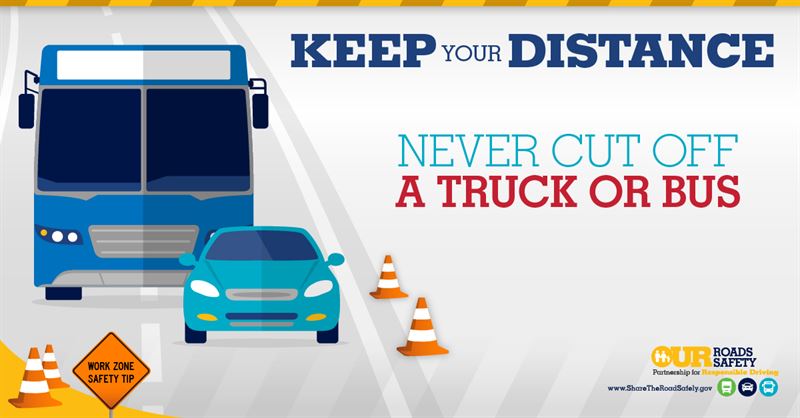PCI Urges Automobile Drivers to think Truck Safety this Winter

Robust Holiday Sales Spike Truck Traffic and the Potential for Accidents
CHICAGO - The convergence of holiday shopping, the resulting surge in truck traffic delivering those goods, and the potential for wintery road conditions means that all motorists should take extra care while behind the wheel this time of year, according to the Property Casualty Insurers Association of America (PCI).
“Greater awareness of how trucks and cars can safely share the road is one of the most important, but often overlooked factors that can help reduce the number of crashes this winter,” said David Golden, assistant vice president, commercial lines for PCI. “Car drivers can inadvertently create hazardous conditions for trucks, which under ideal conditions take longer to stop and have limited maneuverability. However, the dangers of cutting in front of a truck, driving in its blind spots, or following too closely are magnified when there are wet and/or icy roads.”
The importance of passenger vehicle drivers being aware of larger trucks and exercising caution is highlighted by Federal Motor Carrier Safety Administration (FMCSA) data which show that another vehicle in or encroaching in the truck’s lane was the critical pre-crash event for 73 percent of fatal large truck crashes.
To reduce crashes, fleet owners are increasingly turning to technology such as emergency braking systems, lane departure warnings, and onboard cameras. “However, trucking companies are also using low-tech strategies such as better maintenance to prevent equipment failures, eliminating unsafe practices that contribute to drowsy driving and the installation of improved underride guards,” said Golden. “It is also important for everyone on the road to simply avoid texting or using a hand-held phone while driving. Better yet, wait to make or answer that call until after you safely get to your destination.”
Fortunately, a few simple actions can prevent problems while driving around trucks and buses:
Rules of the Road from the Federal Motor Carrier Safety Administration:
1. Stay out of the “No Zones:” Large trucks and buses have huge blind spots – or No Zones – around the front, back and sides of the vehicle. If you can’t see the driver in the truck’s side mirror, assume that the driver can’t see you. Don’t drive in a blind spot – slow down or move ahead to stay visible. Be particularly careful when merging near a truck or bus. You may likely be in a blind spot.
2. Pass Safely: Make sure you can see the driver in the mirror before passing. Signal clearly, then move into the left lane and accelerate so that you can get past the truck or bus safely and promptly. Don’t linger in the blind spot. Make sure the truck or bus is visible in your rear mirror before you pull in front; give it extra space. Avoid passing trucks and buses on a downgrade where they tend to pick up speed. Never pass from the right lane. When a bus or truck is passing you, stay to the right and slow down slightly. Giving the driver room to pass safely helps get you out of the blind spot quicker. Remember to give trucks and buses plenty of space to merge in front of you when coming off ramps or changing lanes.
3. Don’t Cut It Close: Provide trucks room to avoid crashes. Cutting in too close in front of another vehicle is always dangerous, but it’s especially dangerous to “cut off” a commercial bus or truck. If you move in quickly from either side, you’re likely to be in a blind spot so the driver may not see you in time. Even if you’re visible, the vehicle may not be able to slow quickly enough to avoid a crash because of the amount of time it takes to stop
4. Stay Back: Tailgating a truck or bus presents added dangers. First, it puts you in a blind spot—or No Zone. Then, because trucks are so high off the ground, if you fail to stop in time (or get hit from behind) your vehicle could slide under the truck, with devastating results. Getting too close when stopped is also dangerous – particularly on an upgrade, where a bus or truck might roll back.
5. Anticipate Wide Turns: Buses and trucks require extra turning room. Be aware that these vehicles sometimes swing wide to turn or may even initiate a turn from a middle (rather than far right) lane. If a truck or bus has its turn signal on never try to squeeze by it or get between the vehicle and the curb.




